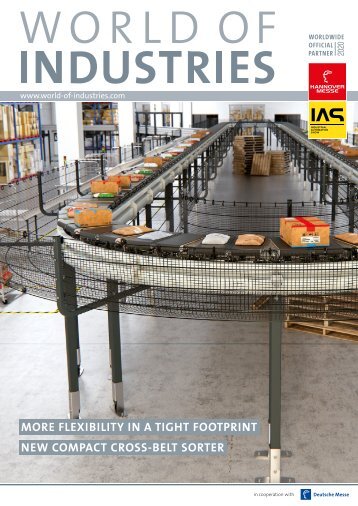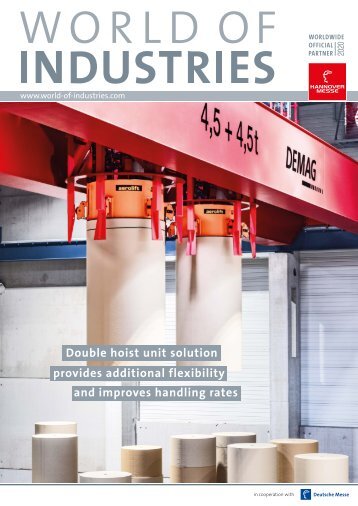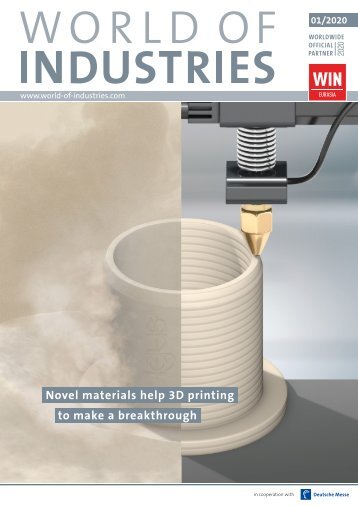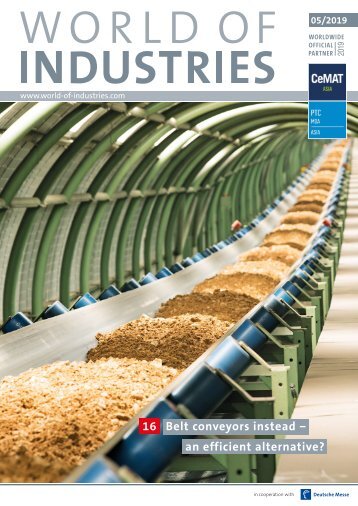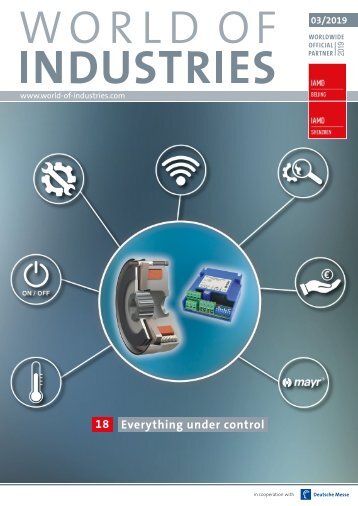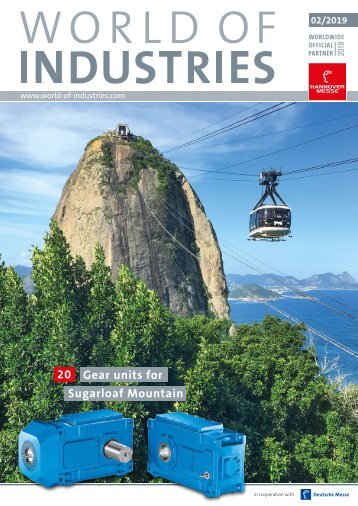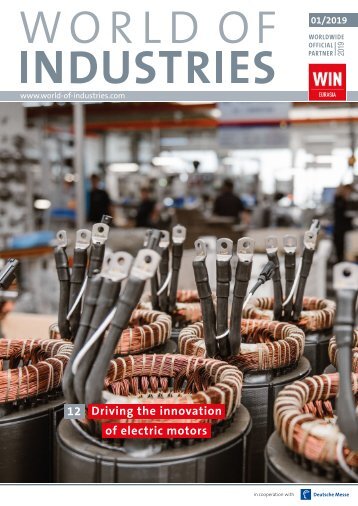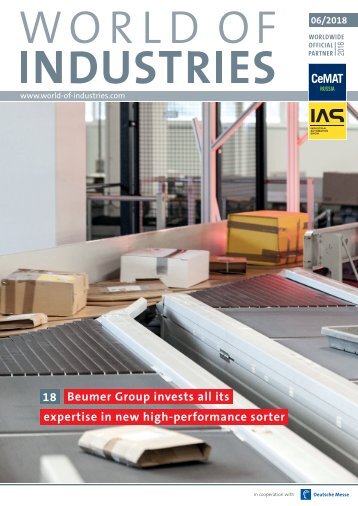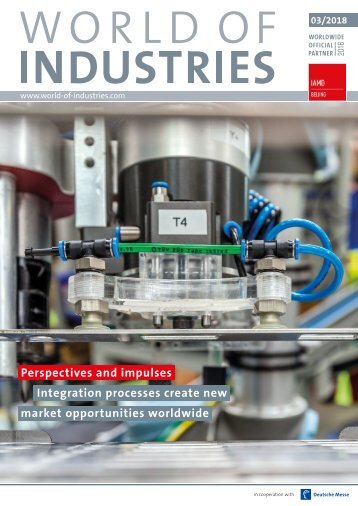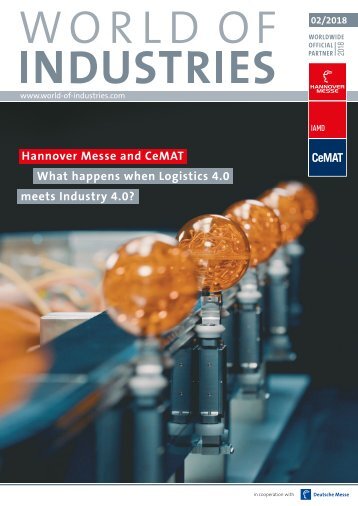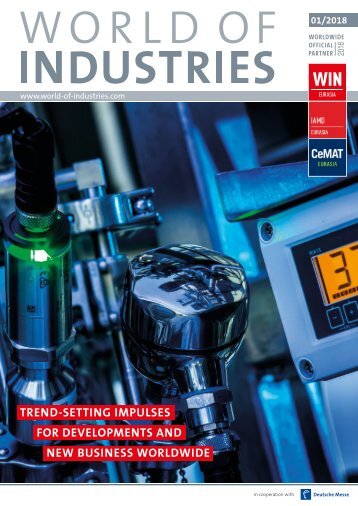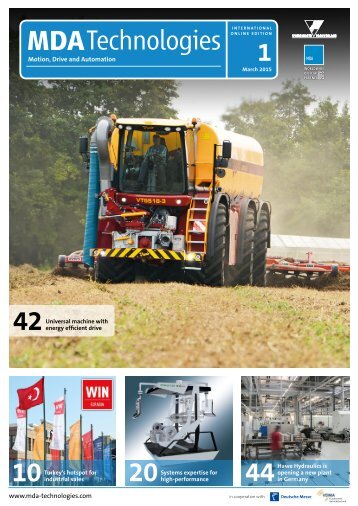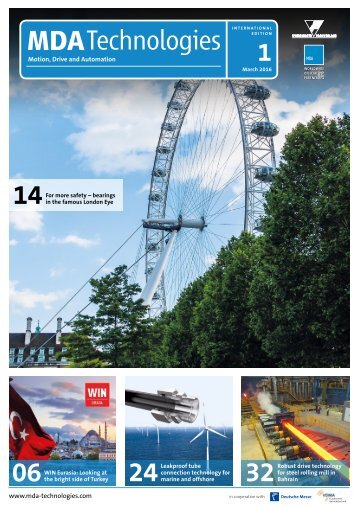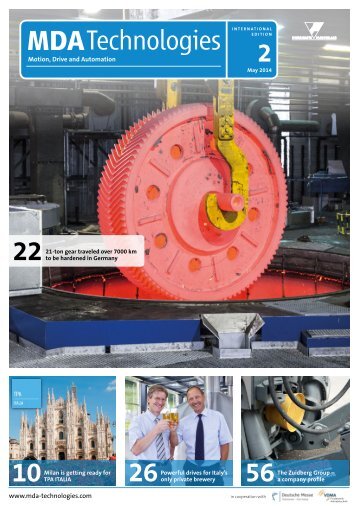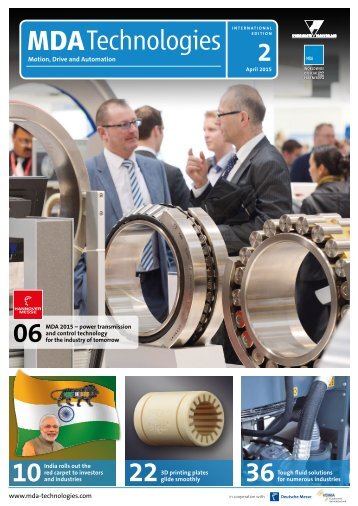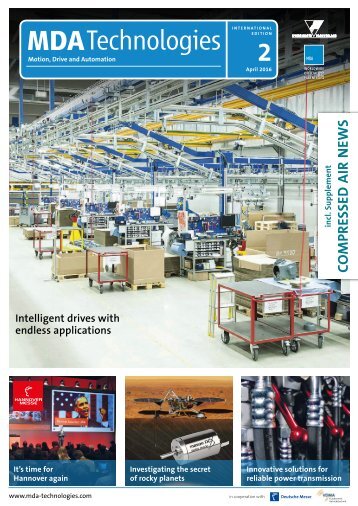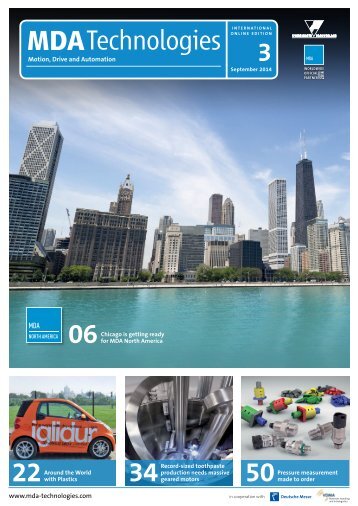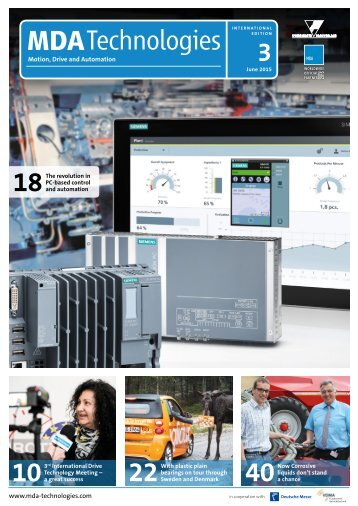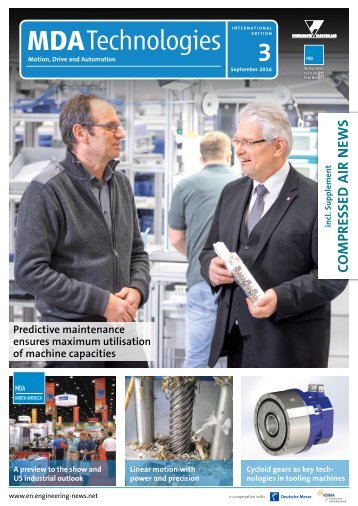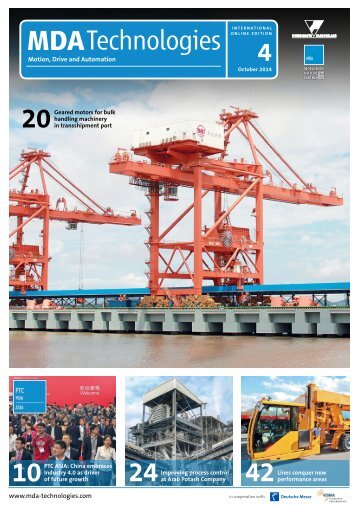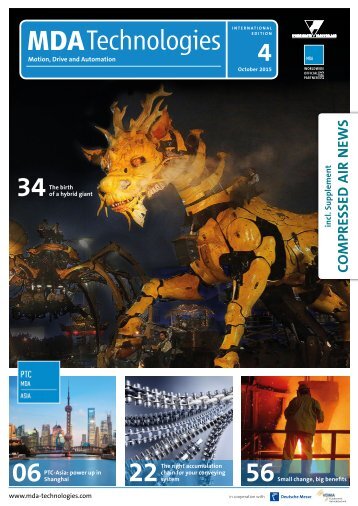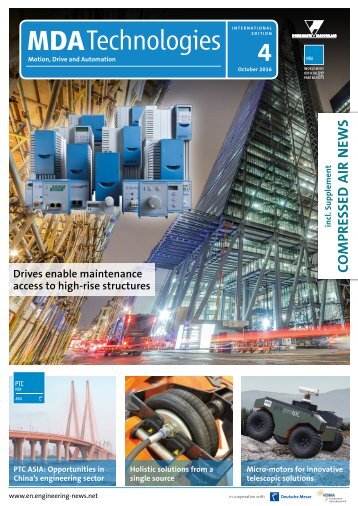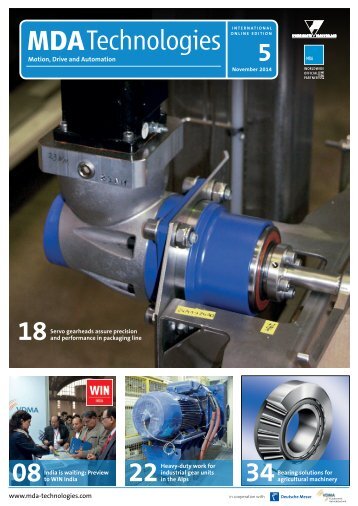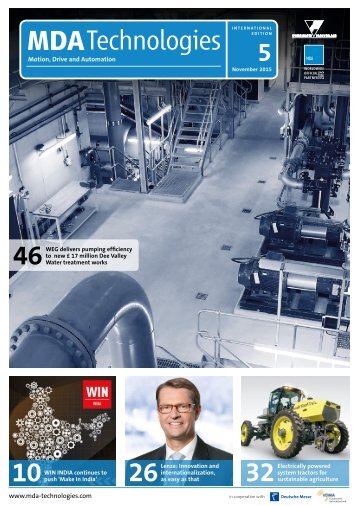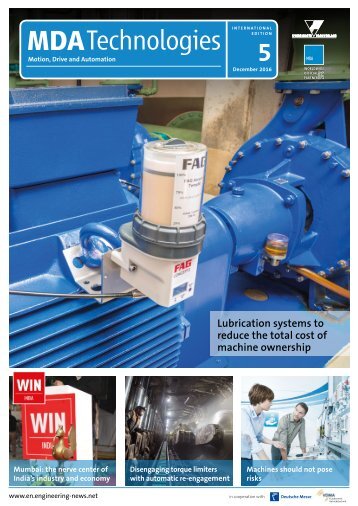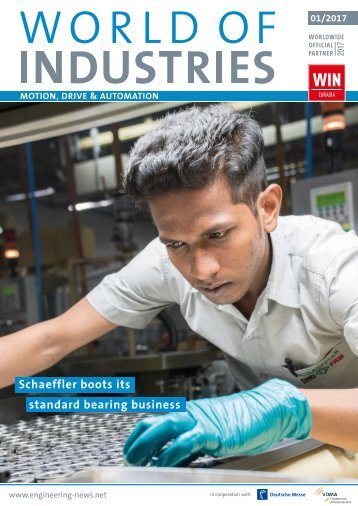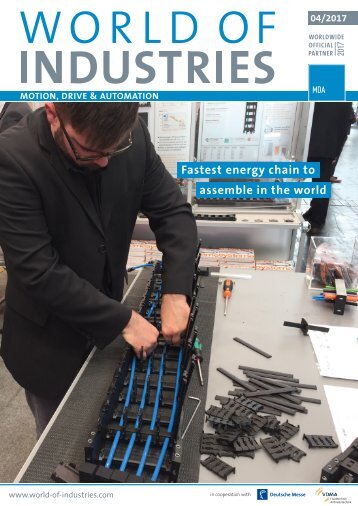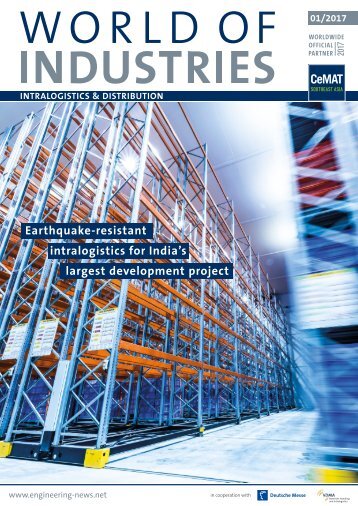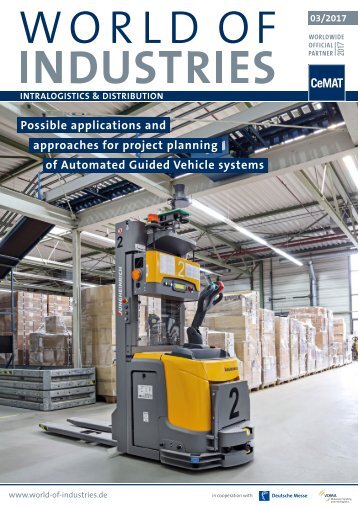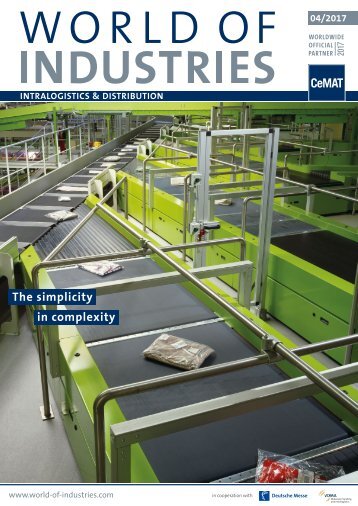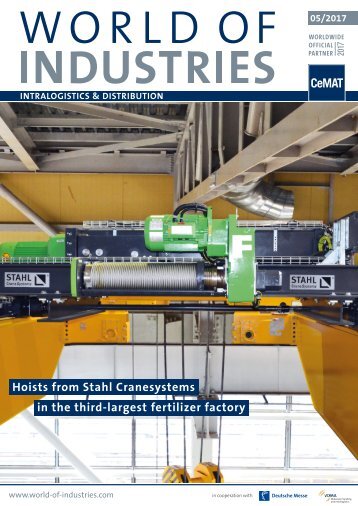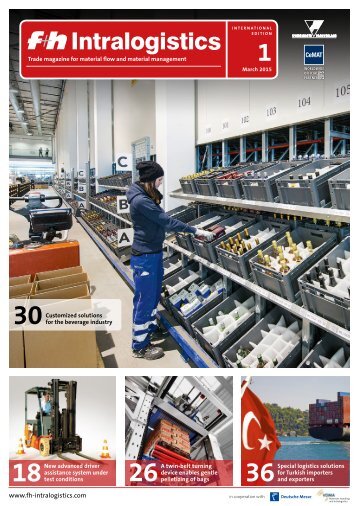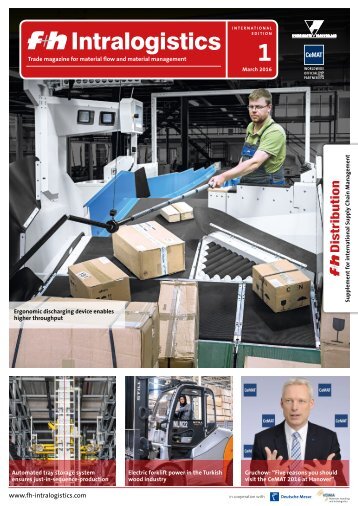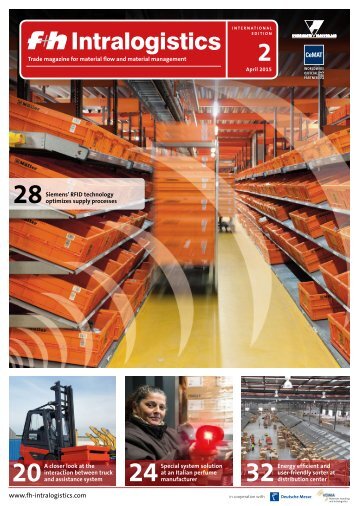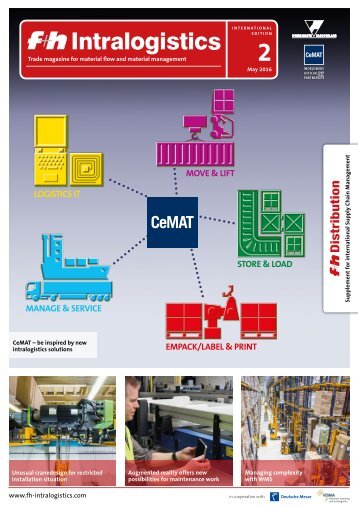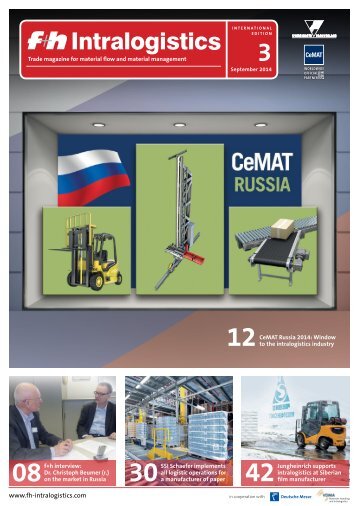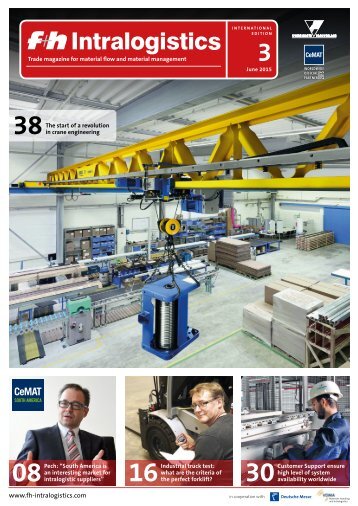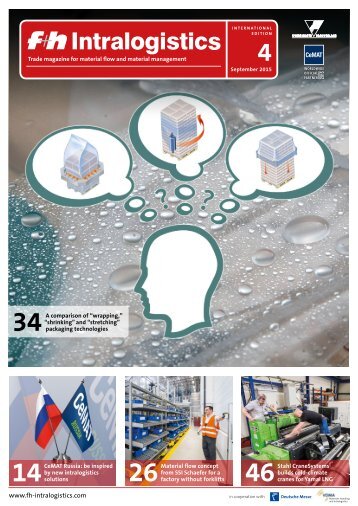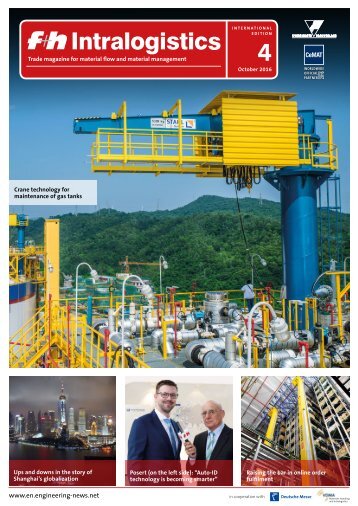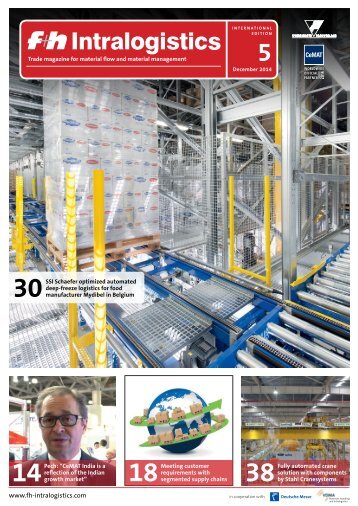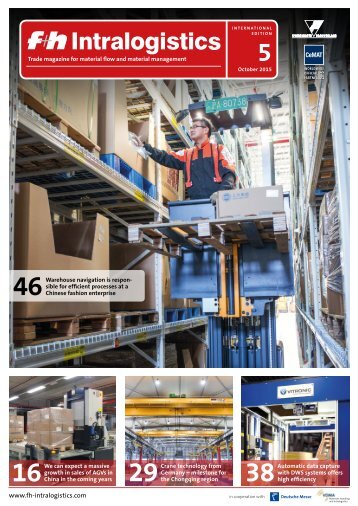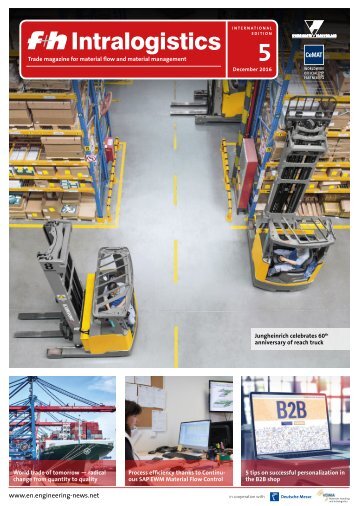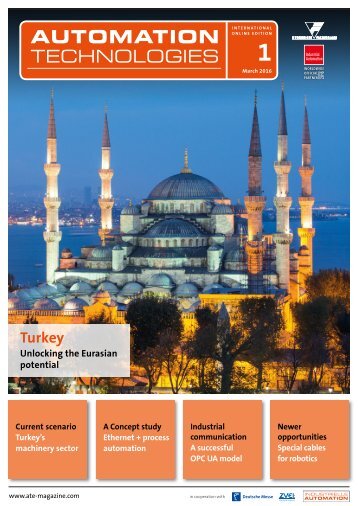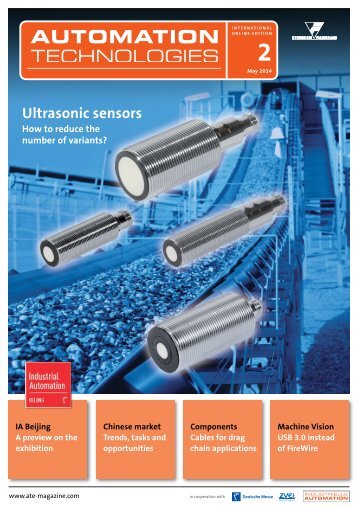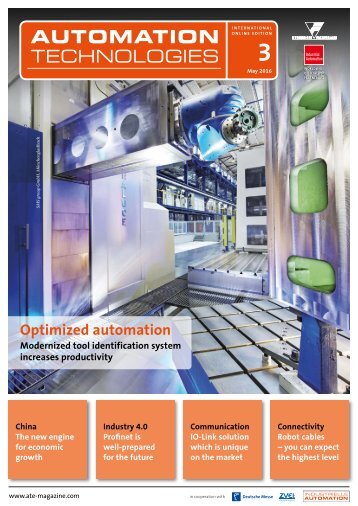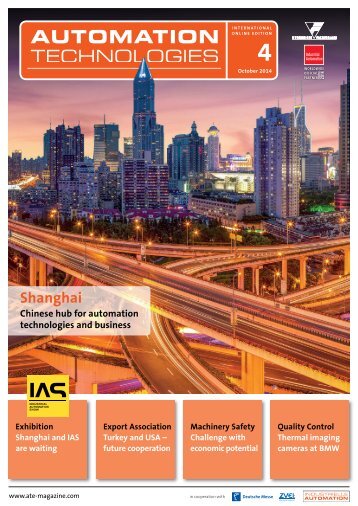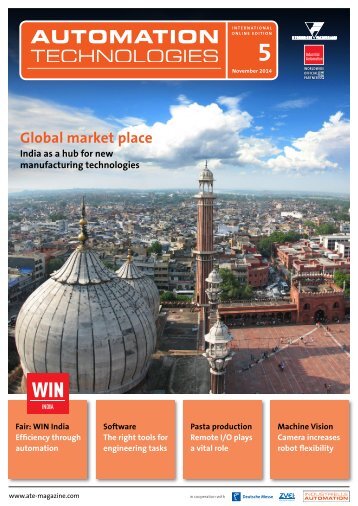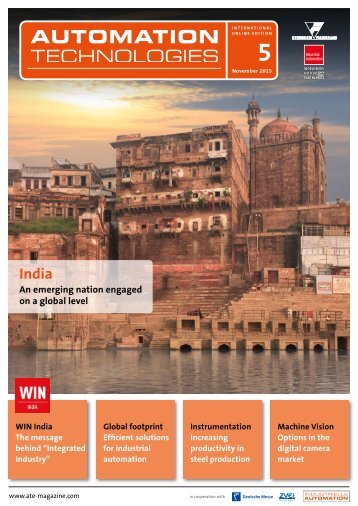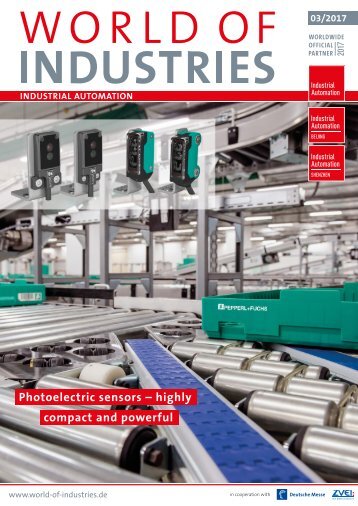WORLD OF INDUSTRIES - LOGISTICS 5/2017
- Text
- Logistics
- Intralogistics
PROJECT
PROJECT LOGISTICS site carriageway of the motorway blocked off so that the modules could pass through the tunnel on the opposite side. Once the first stage had been mastered, the cargo was transferred from the road to the water: In Mannheim, the modules were loaded onto a specially chartered barge for transport to Antwerp. Passage to Shanghai Thanks to precise planning, the logistics experts had 72 hours after arrival in Antwerp to prepare the modules for their long journey. They were securely packed for protection against the sea conditions and climatic zones and finally loaded onto the shipping platforms provided, the “flatracks” for oversized goods. “The large seagoing vessels don’t wait, everything had to be ready on time,” explains Thomas Tesfaldet. The sea transport also made exceptional demands on the logistics partners: The modules had to be securely anchored to the flatracks so that remained secure and stable during the long passage. Furthermore, the delicate freight had to be transported under deck in order to protect the interior of the research laboratory as well as possible. Due to the size of the load – one module on a flatrack takes up the space of ten containers – and the widely varying load distribution during the passage, the modules also had to be very clearly marked. That also enabled the quality controls to be carried out transparently. After each stage of the transport, Hermes Germany inspected the freight for possible damage and remedied this, where necessary, in cooperation with local trade partners. For this, M+W in cooperation with Hermes Germany had appointed an external independent Thomas Tesfaldet, project manager at Hermes Germany SCS and responsible for this huge project surveyor, a person who monitored both the loading and unloading of the modules and inspected them for quality and condition. The surveyor constantly documented every movement of the modules and had all the safety-relevant passes necessary to be able to move freely around the terminal premises of the shipping companies in order to carry out his work. Safety and cost-effectiveness formed a perfect symbiosis here. The contact to leading and reliable partners worldwide was a major criterion for the success of the project. While the modules were on their way to the port in Shanghai, preparations for the “last mile” to the construction site were already in full swing. In order to ensure that the very valuable modules could be safely transported to their destination, the project coordinators decided to build a dummy. A model of the largest module 01 Prehaulage: For the first stage of the journey, the modules are lifted onto heavy goods vehicles WORLD OF INDUSTRIES – INTRALOGISTICS & DISTRIBUTION 5/2017
02 Arrival in Antwerp: In the early hours of the morning, the modules are unloaded from the barge and prepared for the passage to Shanghai was built, loaded onto a flatrack and transported along the selected route to the site. This enabled critical sections of the route to be reliably identified and any potential problems to be remedied in good time. This was particularly important in view of the situation in China. “Clocks in China tick differently, and the mentality there is somewhat different from ours,” says Thomas Tesfaldet and adds: “At the toll stations we sometimes had only about an inch (2 cm) of clearance on the left and right. That was important to know in advance for optimum scheduling.” In the right place at the right time The modules were finally escorted to their final destination, the site of the research center in Hangzhou, around 125 miles south-west of Shanghai. The whole delivery process took barely more than 6 months. Construction of the biotechnology center was completed “just in time”. The preparations, from the invitation to tender by the M+W Group through to the delivery of the modules at their destination, took a whole year in total. From the project planning through the loading and crane handling activities, right up to the worldwide handling of the transport, including all the customs formalities – a company can only be successful if it has a strong command of all the classic aspects of project logistics. That means: Meticulous planning and putting the right team together for the job in order to be in the right place at the right time. Photographs: Fotolia, Hermes/Processing VFV Layout www.hermesworld.com 03 Securely sheathed in orange plastic film, the modules now withstand even the climatic zones and the sea conditions that they will face during the several weeks of the sea passage About Hermes Based in Hamburg, Hermes Germany is one of the leading logistics service providers in Germany and a partner to various online shops and multi-channel retailers in Germany and abroad. The company focuses on national and international parcel deliveries as well as processing the upstream flow of goods. Hermes Germany is one of twelve companies that form the internationally operating Hermes Group, which in turn is part of the Otto Group. The range of services provided by the companies operating under the Hermes brand covers the entire value added chain of the trade sector and includes sourcing, quality assurance, transport, fulfillment, parcel delivery services and two-man handling services. In the financial year of 2016, the Hermes Group increased its total turnover to EUR 2,640 million and currently employs 12,618 members of staff. Hermes operates on a global scale and has its own companies in the UK, Russia, Italy and Austria. WORLD OF INDUSTRIES – INTRALOGISTICS & DISTRIBUTION 5/2017
- Page 1 and 2: 05/2017 INTRALOGISTICS & DISTRIBUTI
- Page 3 and 4: TABLE OF CONTENT EDITORIAL CHINA’
- Page 5 and 6: EDITORIAL Made in China 2025 Two ye
- Page 7 and 8: keeps on increasing the, the costs
- Page 9 and 10: Advanced controls to suppress the v
- Page 11 and 12: SOME THINK DELIVERY ERRORS ARE INEV
- Page 13: Hangzhou Shanghai produced modules
- Page 17 and 18: PRESENTS YOUR INNOVATION EXCELLENCE
- Page 19 and 20: EQUIPPED FOR THE FUTURE Companies t
- Page 21 and 22: nology, but also with a new warehou
- Page 23 and 24: ange of innovative solutions. In th
- Page 25 and 26: 01 Stage V without DPF due to right
- Page 27 and 28: In Production and Logistics, proces
- Page 29 and 30: each vehicle permanently monitor th
- Page 31 and 32: About Nord Drivesystems A developer
- Page 33 and 34: INTRALOGISTICS & DISTRIBUTION Publi
- Page 35 and 36: dedicated, strong division since th
- Page 37 and 38: automation that delivers ® Visit I
- Page 39 and 40: Product News Efaflex expands into C
- Page 41 and 42: Compact and powerful In normal oper
- Page 43 and 44: 01 To ensure smooth operation of th
Inappropriate
Loading...
Mail this publication
Loading...
Embed
Loading...


